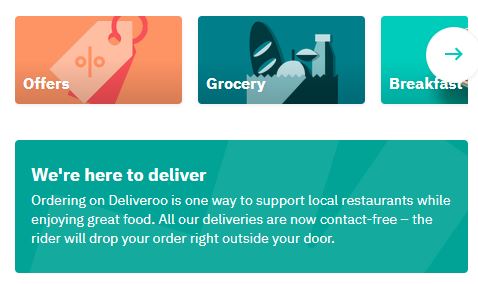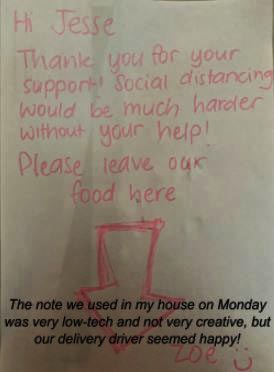Ten years ago, UberEats and Deliveroo did not exist, now they’re multi-billion dollar global businesses. Today food delivery workers make it much easier for many of us to comply with social distancing rules amidst the COVID-19 pandemic. A quick look at Google Search trends suggests they must be: Deliveroo, Uber Eats, and Menulog received more searches on the week restaurants and bars were forced to provide takeaway and delivery only than any week over the previous year. This trend has continued upwards for Uber Eats and Menulog.

Delivery workers in the gig economy are some of the most vulnerable members of society. In Australia, they are often temporary residents with restricted access to employment, welfare, and healthcare. Their work is inherently risky: 45% of food delivery workers report that they or someone they know has been injured while working. The current pandemic poses a new threat: food delivery workers in the gig economy cannot work from home, typically do not have access to job protections or sick leave, and are putting their own health at risk by delivering food to people self-isolating at home. This means that they may be risking their own health, as well as the health of others, by necessity.
What can we do to help?
Make the no contact option your default.
Even if you’re not sick, use the no contact option for your delivery. Some delivery companies have already made this the default, meaning that it is the pre-set option. Defaults exert a powerful influence on our behaviour and dramatically increase the likelihood of us selecting a particular option. For example, we showed that automatically enrolling people
into a pensions saving scheme increased participation from 36% to 71%. We hope that more delivery companies will continue to do this.

Order outside of peak delivery times.
During peak delivery times, those working in areas with a high restaurant density may find it difficult to maintain social distancing rules. As delivery drivers are paid per delivery, ensuring their work is spaced out over time reduces incentives to take risks such as speeding or not washing their hands. Similarly, service workers in restaurants report that time pressure is a barrier to handwashing.
Leave a personalised, friendly message, and a tip.
Even before social distancing came into effect, many food delivery workers reported feeling lonely and isolated. In other settings, expressions of gratitude can help combat distress, suggesting it’s more important than ever to make workers feel valued. You can do this when you order by writing a thank you note with their name, or a friendly smiley face, and sticking it to your door.

Leaving a tip is another way of expressing your gratitude, but also serves a pragmatic purpose. Food delivery workers in the gig economy are economically vulnerable, and often earn below minimum wage. Providing them with more capital means that they’re more likely to be able to afford to not work if they’re sick or asked to self-isolate. If possible, do this via the app to reduce the risk of transmitting COVID-19 via cash.
Prompt yourself to regularly clean surfaces workers need to touch.
You should clean surfaces that workers need to touch, such as your doorbell or gate. To do this, you should form an ‘if-then’ plan (or ‘implementation intentions’). You should identify a particular trigger (e.g. ordering food), and then commit to the activity (cleaning the specific surfaces workers might touch) every time this happens. This could look like “If I order Uber Eats, then I will clean the handle on my gate as soon as I’ve placed my order”. In the future, businesses could also prompt you via the app to clean these surfaces before delivery.
The Takeaway
Food delivery workers are more important than ever before. There are simple things you can do each time you order to help keep workers and yourself safe. Use the ‘no contact’ option by default, and clean any surfaces workers might need to touch. Order outside peak times to spread food delivery trips out over a wider time window. Use a personal touch when showing your gratitude to food delivery workers – use their name, and write them a handwritten note. Finally, make sure you remember how valuable they were in supporting us through this crisis.




